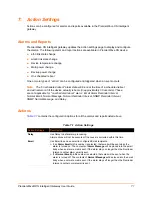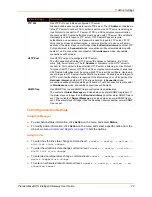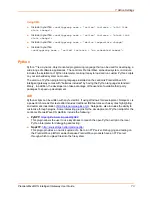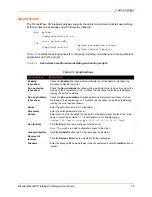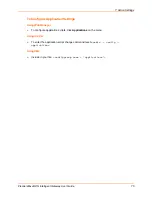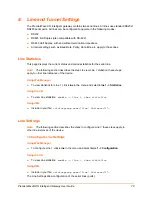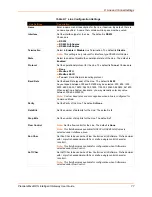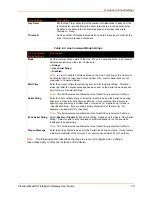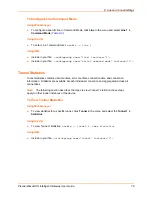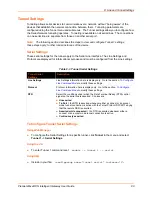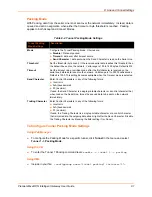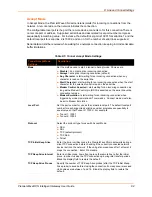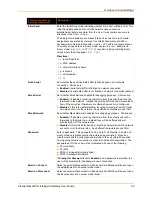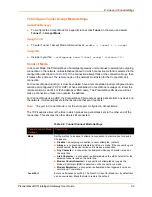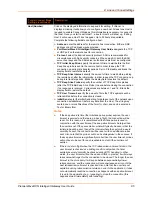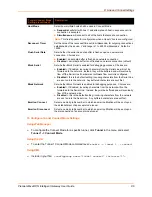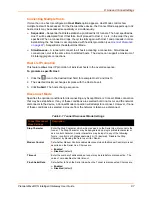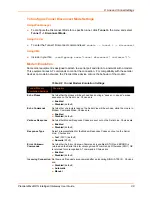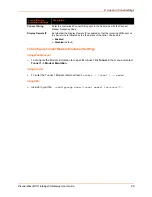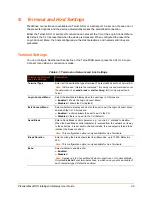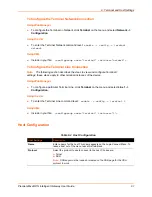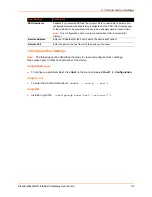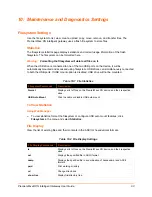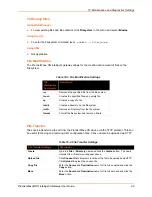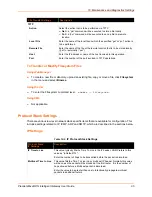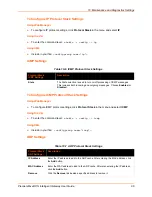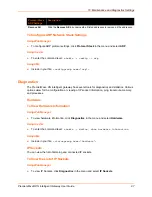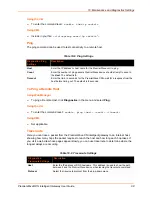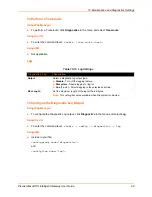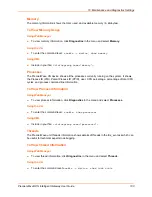
8: Line and Tunnel Settings
PremierWave® XN Intelligent Gateway User Guide
85
Host (Number)
Click on the displayed information to expand it for editing. If <None> is
displayed, clicking it will allow you to configure a new host. At least one Host is
required to enable Connect Mode as this information is necessary to connect to
that host. Once you start to edit Host 1, a box for Host 2 will show up. Editing
Host 2 will cause a Host 3 box to appear. Up to 32 hosts are available.
Complete the following fields to configure a host:
Address:
enter the address for the remote host connection. Either a DNS
address or an IP address maybe provided.
PortPremierWave XN Intelligent Gateway User Guide
designate the TCP
or UDP port on the remote host for connection.
Protocol:
select the desired security protocol. SSH is recommended for
circumstances with high security concerns. When using SH, both the SSH
server host keys and the SSH server authorized users must be configured.
TCP Initial Keep Alive:
specify the amount of time to wait before the first
Keep Alive probe is sent to the remote host in order to keep the TCP
connection up during idle transfer periods. Set to 0 to disable and blank the
display field to restore the default.
TCP Keep Alive Interval:
specify the amount of time to wait before probing
the remote host, after the initial probe, in order to keep the TCP connection up
during idle transfer periods. Blank the display field to restore the default.
TCP Keep Alive Probes:
specify the number of TCP Keep Alive probes
(after the TCP Initial Keep Alive Probe) to send before closing the connection
if no response is received. Valid values are between 1 and 16. Blank the
display field to restore the default.
TCP User Timeout: s
pecify the amount of time the TCP segments will be
retransmitted before the connection is closed.
I
nitial Send:
enter the Initial Send string for data sent out of the network upon
connection establishment (before any data from the Line). The string may
contain one or more Directives of the form %<char> and can be entered in
Text or Binary form.
Notes:
If the keep alive idle time (the initial keep alive probe) expires, the user
timeout is expired, and there are probes in flight, the connection will be
reset. For this reason, it is recommended that if keep alive is used in
conjunction with the user timeout, the keep alive timeouts be larger than
the user timeout. If they are smaller, what will typically be seen is that the
initial probe will be sent, then at the interval where the next probe would
normally be sent, the connection will be reset, with no additional probes
sent. Also note that the probe count can be disregarded in these cases: if
the keep alive timers are significantly smaller than the user timeout, probes
will continue to be sent for an unreachable host until the user timeout
expires.
If there is data in flight when the TCP retransmission timeout kicks in, the
user timeout is checked as a limiting condition only when the timer
expirations would normally be checked during RTO handling. In other
words, the user timeout will not be an exact limit; in practice, it will always
take somewhat longer for the connection to be closed. The longer the user
timeout is, the more likely it will expire between exponentially slower
retransmissions, and the connection will not experience an error until the
next retransmission timeout is checked. Also note that the user timeout
expiration during retransmission returns an error to the application; it does
not automatically reset the connection as happens with keep alive timeout.
It is up to the application (e.g., tunneling) to close the connection (this
happens almost immediately with tunneling).
Tunnel Connect Mode
Settings (continued)
Description

